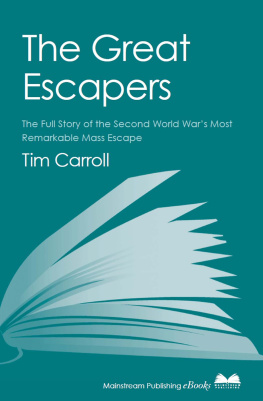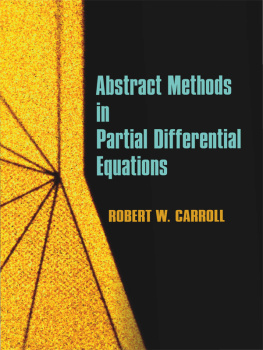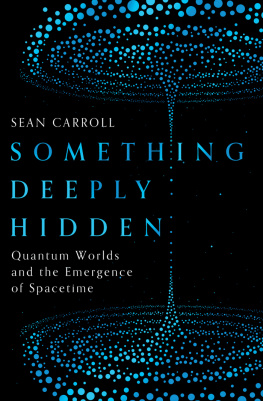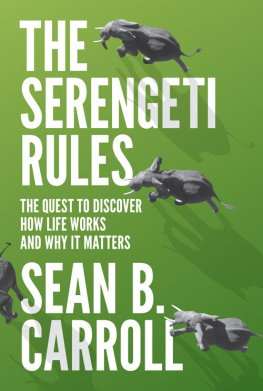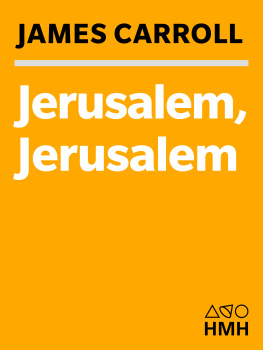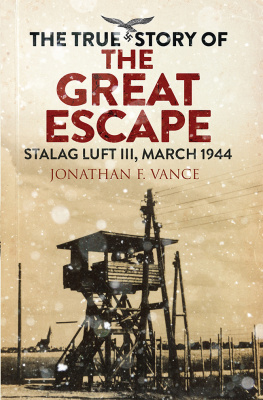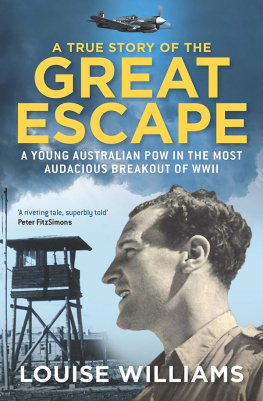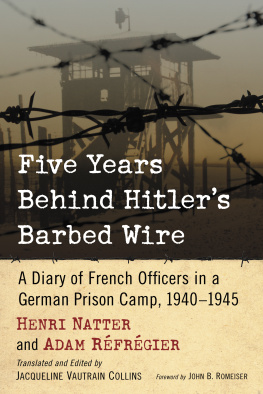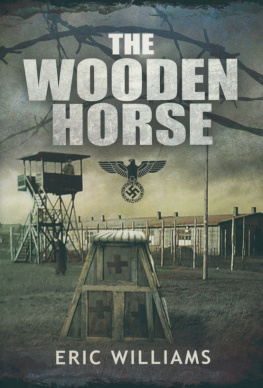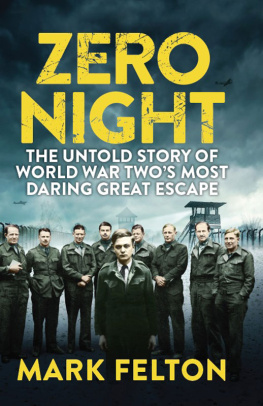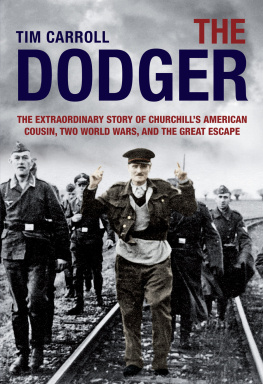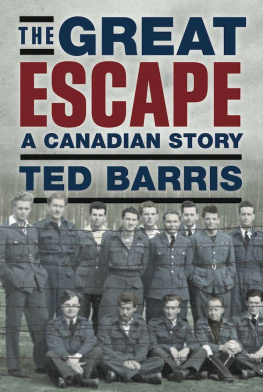THE GREAT ESCAPERS
The Full Story of the Second World Wars Most Remarkable Mass Escape
Tim Carroll
This eBook is copyright material and must not be copied, reproduced, transferred, distributed, leased, licenced or publicly performed or used in any way except as specifically permitted in writing by the publishers, as allowed under the terms and conditions under which it was purchased or as strictly permitted by applicable copyright law. Any unauthorised distribution or use of this text may be a direct infringement of the authors and publishers rights and those responsible may be liable in law accordingly.
Epub ISBN: 9781780571188
Version 1.0
www.mainstreampublishing.com
Copyright Tim Carroll, 2004
All rights reserved
The moral right of the author has been asserted
First published in Great Britain in 2004 by
MAINSTREAM PUBLISHING COMPANY (EDINBURGH) LTD
7 Albany Street
Edinburgh EH1 3UG
ISBN 1 84018 795 6
No part of this book may be reproduced or transmitted in any form or by any other means without permission in writing from the publisher, except by a reviewer who wishes to quote brief passages in connection with a review written for insertion in a magazine, newspaper or broadcast
A catalogue record for this book is available from the British Library
For Georgia and Patrick
Acknowledgements
I must start by thanking Roy Conyers Nesbit, the Royal Air Force editor at the Public Records Office (now renamed the National Archives) and prolific aviation writer. Roy has extended me endless help and guidance on all matters relating to the RAF, and I will not forget his kindness and generosity in entertaining me at the RAF Club in Piccadilly. Thanks to Roy, I have acquired an abiding interest in aviation and the RAF, and I hope this will not be my last book on the subject. I owe an equal debt of gratitude to Ian Sayer, the author and chronicler of Nazi misdeeds, who offered me access to his extensive Second World War archive and very kindly allowed me permission to reproduce letters written by some of the Great Escapers. Ian has been continuously generous with his advice on this book and others. Id like to thank Hugh Alexander and Paul Johnson at the National Archives Image Library, as well as all the staff of the Archives reference library at Kew, the Imperial War Museum in Lambeth and the British Library. Over the years I have been given a great deal of assistance by the staff of the United States National Archives in Maryland, USA, providing material for this book and documentary films. I am particularly indebted to General Albert Patton Clark, late of the United States Air Force Academy in Colorado Springs, USA, and the Academys archivist, Duane Reade. I recall with great fondness my visits to the Academy, and am grateful for Duanes invaluable assistance when I produced and directed a short documentary about the Great Escape in 1999. Duane also gave me a copy of Colonel von Lindeiners (unpublished) memoirs, and British Air Ministry records of the post-war SIB investigation into the killings of the 50 airmen from Sagan. I must thank Jimmy James, one of the greatest of the Great Escapers, for his invaluable help, encouragement and advice, and the use of much of his private archive. Thanks too to his escape partner Sydney Dowse as well as the four of the other remaining officers who actually made it out of the tunnel that March night 60 years ago. Tony Bethell, now living in Canada; Les Brodrick in South Africa; Mike Shand in New Zealand; and Paul Royle in Australia were all kind enough to help me with their reminiscences of the escape, as was Desmond Plunkett although, sadly, he has subsequently passed away. Thanks to Peter Elliott at the Royal Air Force Museum, Hendon. Thanks to Halvor Sperbund in Bergen for providing me with help and assistance regarding the two Norwegian escapers, Per Bergsland and Jens Muller; and to the Dutch flier Bob van der Stoks son, also named Bob, in California, USA. Thanks to the Air Force Museum in Christchurch, New Zealand. Many thanks to Charlotte Bergsland for the photographs of her late husband; Elizabeth Carter for her help regarding her brother Roger Bushell; and Bushells biographer, John D. Carr. I must not forget the other authors whose efforts have cast intriguing light on this amazing period of history and without which my task would have been much harder. In particular Arthur Durands Stalag Luft III: The Secret Story is an incomparable and scholarly dissertation on the subject. Jonathan Vances A Gallant Company is the most comprehensive study of each of the individual escapers lives that I have ever read. Finally, I must mention Dick Churchill, the seventh Great Escaper, who is still with us. Dick says he doesnt want to think about what happened 60 years ago, and would rather concentrate on what his five grandchildren will be doing in the future. I think thats a very commendable attitude, but one that I hope doesnt deter those who still find this episode of military and Commonwealth history enduringly fascinating.
Preface
This book owes its origins to a 1999 television documentary series for the Learning Channel that I was a producer and director for. It included a short episode about the Great Escape that I felt had been inadequately illustrated which, given the comical ineptitude of the team making it, came as no surprise. I was determined to produce a better account. In fact I had hoped to make a full-scale documentary for either the BBC or Channel 4 to accompany a book. I didnt get anybody to take up the idea, but am pleased to know that Mark Radice of Windfall Films succeeded where I failed. His programme, which I think pursues a highly intelligent angle, should be broadcast around the same time this book appears.
What intrigued me about the Great Escape was the sheer scale and complexity of the achievement. I grew up with the film The Great Escape, as did probably every child of my generation. One summer I set myself the task of producing an authentic British passport for myself. I reasoned that if some half-starved Allied officers could produce thousands of bogus identity papers amid the deprivations of a freezing Second World War prison camp, I could surely make myself a passport in the comfortable surroundings of my home and with all sorts of modern technology at my disposal. I was wrong, of course, and the final product of my summers efforts was lamentable.
The question that comes up time and again about the Great Escape is: how on earth did they do it? By simplifying the story I dont think the Hollywood version of events casts much light on this question. Ive discovered that the answer is a complicated one. On the one hand it was not quite so difficult as it seemed. The officers imprisoned in Stalag Luft III, the German Air Force camp from which they escaped, were a privileged bunch, probably better treated than any other POWs in the European or Asian theatre. They were the elite of the Allied air forces and were treated as such. Their rations were good, and they were supplied with sporting equipment, books and materials to put on theatre productions that would have been the envy of many a regular soldier, whose treatment at the hands of the Germans was appalling.
It was not extraordinarily difficult for the officers to obtain the materials necessary for producing false identity cards. Their privileged status helped because the war, by the time of the Great Escape, had been going against Germany for some time and it was apparent to everybody that the Allies were going to win. Most of the German staff of Stalag Luft III were anxious to stay on the right side of the officers, many of whom had connections in high places and might reciprocate the favour in the post-war world. Many of the German security staff were impoverished and starving. It did not take a lot to win them over.

